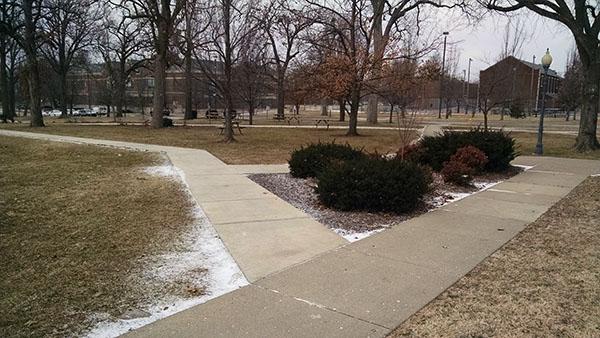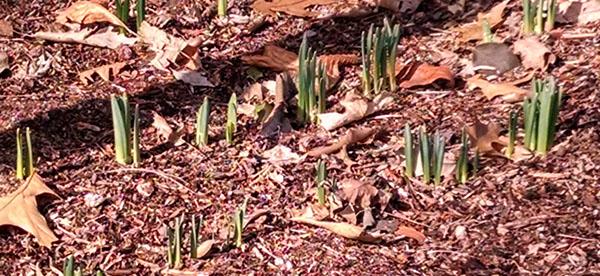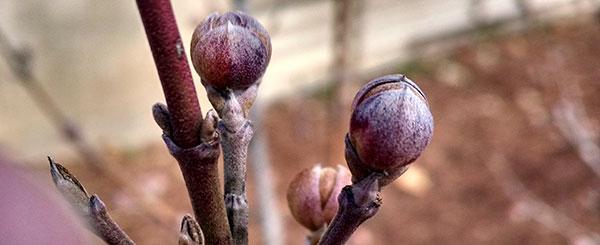Spring Fever...
I admit it, I have Spring Fever. Just this past week on January 28, here in Springfield, Missouri we hit 67 degrees. The Drury University Grounds Crew was out doing a number of jobs that were more about preparing for spring, and less about killing time in winter. We mulched leaves, cut back perennials, spread some mulch, and even continued work on a stone patio that had been idle for more than a month due to conditions. I even started determining quantities of seed and fertilizer for some early spring overseeding on several athletic fields. But reality, and several more weeks of winter, have got me thinking about how I measure time from fall to spring.
Shortest Day
I have several benchmarks I use to mark the beginning of, and the passing of winter. The first is December 21st. Most of you will recognize this as the shortest day of the year. Sunrise was at 7:23 a.m. and sunset was at 4:59 p.m. Like many others, I came to work in the dark, and returned home in the dark. This truly is a low point of the year. Winter has officially started, temperatures are dropping, and the landscape seems very dreary. But even with all that, I know that day length has nowhere to go but up. Within several days, sunset gets later by a minute a day, each day. This slow change always gives me a lift, even though for several weeks, we won't pick up time in the morning. Days are getting longer equals more sunshine, means warmer temps are coming.
Average Temperature Bottoms Out
My next benchmark occurs in mid-January. From January 21st to January 18th, Springfield's average temperatures are 21 degrees low and 41 degrees high. Before you cold weather guys start scoffing at these mild temps, remember that these are averages, not actual (we do get cold), and I would gladly trade cold temps for tornadoes, ice-storms, and golf ball size hail (all of which are fairly common in the Ozarks). On January 19th our average low temp climbs to 22 degrees. Once again, we have reached the bottom and have nowhere to go but up. We now have the beneficial double whammy of longer and also warmer days.

Historical Coldest Day
The last benchmark that is almanac based is the coldest day on record for Springfield. This occurred February 12th, 1899. The low temperature that day was MINUS 29. That is cold in anyone's book, and that is not wind chill. I have to admit I find this temperature remarkable. In our line of work, all of us can expect some level of cold weather exposure. Some tolerate it better than others. The truth is it takes one week to get used to 20 degrees, but only one day to get used to 50 degrees. That being said, I remind my crew, and anyone else who says "it sure is cold today" that when the temp is 19 degrees, imagine how cold it would be if it was 50 degrees colder! From here on there are no days where the historic low is even anywhere near minus 29, so again, we are going in the right direction.

Daylight Savings Time Begins
The last benchmark I use for measuring winter is Daylight Savings Time (DST). In 2015 DST starts on March 8th. 'Spring forward, fall back' as the saying goes. On March 9th sunset occurs at after 7pm. Spring is here as far as I'm concerned. With almost twelve hours of daylight, photoperiod response is in full swing. At this stage, even cold weather is usually short lived, but we don't tolerate it well because we are already used to 50 degree days. A day that doesn't get above freezing is rough at this point. Even if we get snow (I remember an 11 inch snow here in April) it doesn't stay around long. We all tolerate things better, and snow melts faster, when the sun shines until 7:00.

Getting Through It
Winter is a challenge for us in the green industry. Winter cold is truly the opposite of summer warmth and it affects the psyche as well as the joints. Grass is brown, trees are bare, recreation changes and usually slows, as does the excitement of the hard work we perform in the other three seasons. Not that we don't work in the winter, but it is different. People always ask me "what do you do in the winter?" Hard to say sometimes, but we always stay busy. But I find comfort and hope in thinking about the beauty of spring and I use my benchmarks to remind me it is coming.



0 Comments
Recommended Comments
There are no comments to display.